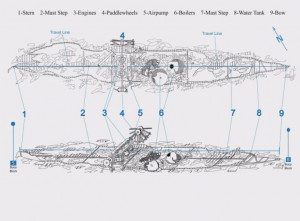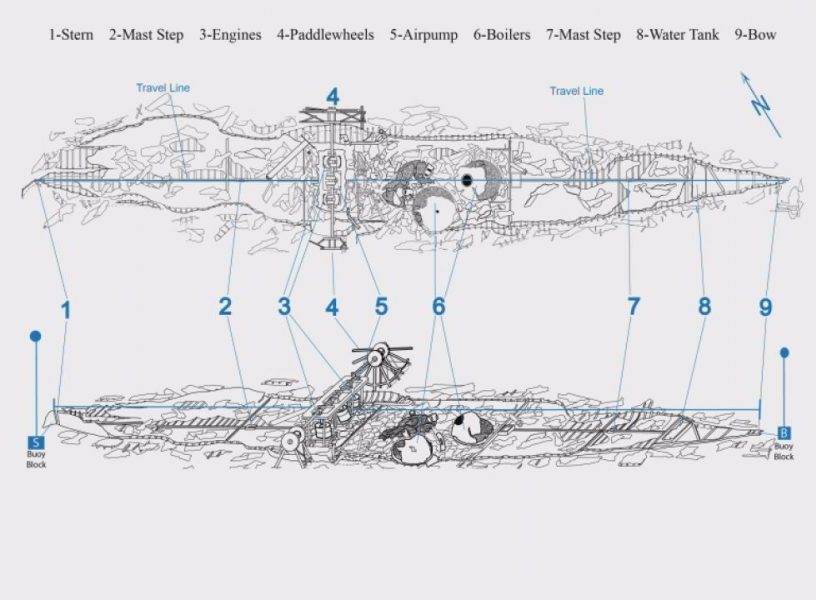NORTH CAROLINA: Wreckage of Civil War Ship to become North Carolina’s First Heritage Dive Site
FORT FISHER — On Oct. 1, 1864, the blockade runner Condor, a falcon class ship built in Glasgow, Scotland, sank 700 yards shy of Fort Fisher in 25 feet of water. It carried dispatches for the Confederate government, 1,500 British gold sovereigns and the Confederate spy Rose Greenhow.
The ship lay under the protection of Fort Fisher’s guns, safe from the federal ships. The captain chose to wait until morning to launch the lifeboats and head safely to shore. Rose Greenhow was frantic to escape the ship, fearing execution as a spy.
Volunteers from the ship’s crew rowed Greenhow toward shore. A wave crashed over the lifeboat capsizing it, and Rose, along with the dispatches and the gold, drowned. She was the only life lost on that ship that night. She is buried among other war dead in Oakdale Cemetery.
Although Rose Greenhow’s dash for the beach ended with her death, and the Condor settled on the sand, that was not the end of the ship’s role in North Carolina’s history. Marine life took over the ship, giving it a new purpose as a haven for fish and as a historical artifact from the Civil War.
On June 16, 2017, the wreck was given new purpose as Susi Hamilton, secretary of North Carolina’s Department of Natural and Cultural Resources dedicated this blockade runner as the first in what she hopes will be a series of Heritage Dive Sites.
Hamilton said the Condor is essentially an underwater museum that divers can visit and see what a blockade runner was like and what it might have been like to live and work on the vessel.
Hamilton stated that this was a joint public/private project between several state agencies, as well as private partnerships with SeaGrant and The Friends of Fort Fisher.
“One thing North Carolina does very well was work with the private sector to develop projects such as this one,” Hamilton said.
Dr. John W. (Billy Ray) Morris, deputy state archaeologist and director of the Underwater Archaeology Branch (UAB), located behind the Fort Fisher historical site, led the dedication ceremony.
“This is something we have been working on since we first mapped the site in 1994,” Morris said.
Maritime Heritage sites began in Florida, where they have been very successful and demonstrated an increase in historical site stewardship and an increase in the revenue of heritage tourism for that state’s economy. Morris said he hopes the creation of Heritage Dive sites will produce similar results in North Carolina.
Dr. Gordon Watts, of the Institute of International Maritime Research, who was the first underwater archaeologist in North Carolina, also spoke. He said he was there to give perspective.
“It was 50 years ago when I started this which makes me as old as the dirt you are standing on,” Watts said.
Watts said the Condor is an excellent example of blockade runners that brought supplies to the Confederacy.
“If you want to dive into history that this is the place to do it,” he said.
Diving was what this dedication was about. Just off shore, underwater archaeologists, Nathan Henry, Greg Stratton and Chris Southerly fastened the buoys to the bow and the stern of the Condor. Patriot Dive Center Divers hosted a volunteer orientation and recruitment for dive stewardship as well as assisting with setting lines and markers on the site.
Starting Monday, divers can pick up dive slates for self guided tours of the Condor. These slates are free, but divers can make a donation. Funds will be used to help preserve the site. The slate provides locations of key features of the wreck and the location of a travel line on the site.
Markers attached to now enjoy self-guided tours of this Civil War relic.



